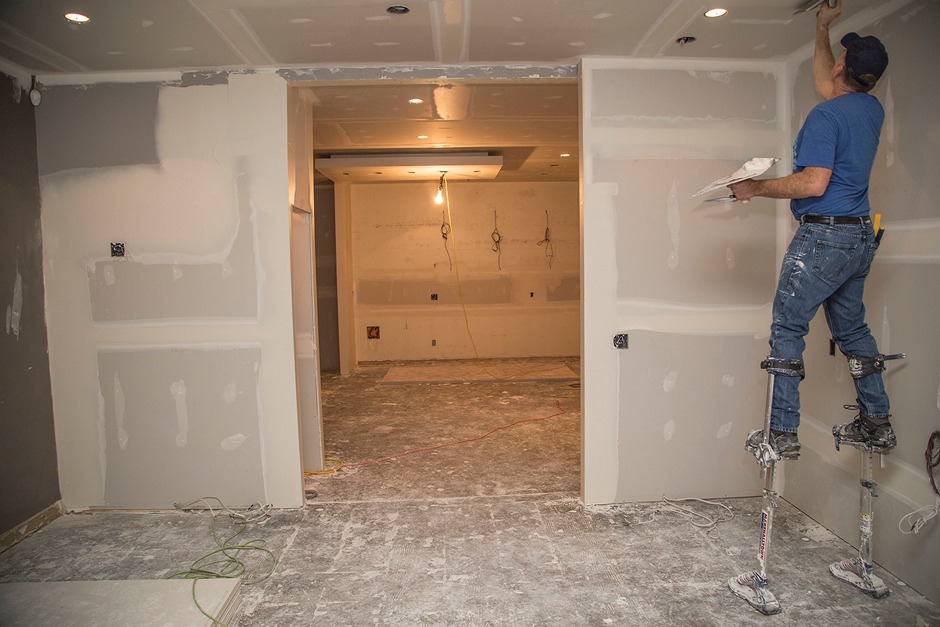Types of Drywalls and Rock sheet: How Contractors Can Calculate a Drywall Project
Construction industry in USA is continuously evolving, with contractors and builders always seeking efficient ways to complete projects.
What is Drywall?
Drywall is a gypsum board or plasterboard; it used in many construction projects. Drywall is widely used for interior walls and ceilings due to its ease of installation and affordability.
When it comes to drywall projects, knowing types of drywalls and rock sheet is just first step. Contractors also need to accurately calculate required drywall materials and costs to ensure a smooth project. This is where construction cost estimating servicescome in.
Types of Drywall and Rock sheet
There are various types of drywall available in USA construction industry, each serving a different purpose. Knowing which type to use is essential for ensuring durability, safety and success of a project.
1. Regular Drywall
Also known as whiteboard, regular drywall is most common type used in residential and commercial projects. It is ideal for interior walls and ceilings in spaces with minimal moisture. It comes in various thicknesses, typically ranging from 1/4 inch to 5/8 inch, depending on project’s requirements.
2. Moisture-Resistant Drywall (Green Board)
As name suggests, moisture-resistant drywall is designed for areas prone to moisture, such as bathrooms, kitchens and basements. It is commonly referred to as green board because of its green coating, which helps resist moisture and mold growth. However, it is important to note that this type is water-resistant, not waterproof.
3. Fire-Resistant Drywall (Type X)
Fire-resistant drywall is designed to slow spread of fire, making it an essential choice for areas where fire safety is a concern. Type X drywall contains fiberglass, which helps it withstand higher temperatures. It is commonly used in garages, stairwells and between apartment units.
4. Soundproof Drywall
Soundproof drywall, also known as sound-dampening or acoustic drywall, is specially designed to reduce noise transfer between rooms. It is made with additional layers of gypsum and other sound-dampening materials. This type of drywall is commonly used in media rooms, home theaters, offices and apartment buildings where sound control is important.
5. Paperless Drywall
Unlike traditional drywall, which has a paper facing, paperless drywall uses fiberglass facing, making it more resistant to mold and mildew. It is ideal for areas that experience high humidity or are prone to water exposure. fiberglass also makes it a more durable option, though it can be slightly more expensive than regular drywall.
6. Flexible Drywall
Flexible drywall is a thinner, more bendable version of regular drywall, typically used in areas with curved surfaces or arches. Its flexibility assists contractors to create architectural features without compromising on structural strength and durability.
How Contractors Can Calculate a Drywall Project
Now that you understand different types of drywall, next step is to calculate materials, costs and labor required for a drywall project. Accurate calculations are essential to avoid waste, stay within budget and ensure project is completed on time.
Drywall estimating services and takeoff estimating services are valuable tools for contractors, helping streamline process and ensure accuracy. Let’s explore key steps in calculating a drywall project.
1. Determine Project Area
first step in calculating a drywall project is to measure area where drywall will be installed. This involves measuring length and height of each wall and ceiling. Multiply length by height to get square footage of each surface. Add up square footage of all surfaces to determine total area that requires drywall.
For example, if you have a wall that is 12 feet long and 8 feet high, total area is 96 square feet (12 x 8). Repeat this process for all walls and ceilings.
2. Choose Right Type of Drywall
Once you know total area, next step is to choose right type of drywall for each section of project. Different areas may require different types of drywall depending on factors such as moisture exposure, fire safety and soundproofing.
For example, you may use regular drywall for general interior walls but opt for moisture-resistant drywall in bathrooms and kitchens. Fire-resistant drywall may be needed for garage walls or between apartment units. This decision will affect total cost of materials, so it’s essential to choose wisely.
3. Estimate Number of Drywall Sheets
After calculating total square footage and selecting appropriate drywall types, you need to determine how many drywall sheets are required. Standard drywall sheets are typically 4 feet by 8 feet (32 square feet), though larger sheets (such as 4 feet by 12 feet) are also available.
To estimate number of sheets, divide total square footage by area of one sheet. For example, if total area is 1,000 square feet and you are using 4×8 sheets (32 square feet each), you would need approximately 32 sheets (1,000 ÷ 32).
It’s a good practice to order slightly more drywall than calculated to account for waste and mistakes during installation.
4. Account for Other Materials and Labor Costs
In addition to drywall sheets, other materials such as screws, joint tape and joint compound are required for installation. You also need to factor in labor costs, especially if you’re hiring a team of drywall installers.
Drywall estimating services can help you account for all materials and labor, ensuring you don’t overlook any critical components. These services allow contractors to create detailed estimates quickly and accurately.
5. Use Drywall Estimating Services
To make estimating process more efficient, contractors can use drywall estimating services. These tools help automate calculation of materials, costs and labor, reducing likelihood of errors.
Drywall estimating services, in particular, allow contractors to generate precise material lists by analyzing project drawings and specifications. This helps ensure that every aspect of project is considered, from drywall sheets to screws, reducing risk of overordering or underordering materials.
By utilizing these services, contractors can save time and focus on actual construction process, knowing that project estimate is accurate.
Conclusion
Understanding different types of drywall and how to calculate a drywall project is essential for contractors in USA construction industry. Selecting right type of drywall based on project’s requirements ensures durability, safety and overall satisfaction.
Incorporating drywall estimating services into planning process helps contractors create accurate estimates, control costs and minimize waste. This not only benefits contractor but also ensures that project is completed efficiently and on budget.
With right knowledge, tools and planning, contractors can successfully navigate drywall projects, providing high-quality results for their clients.






